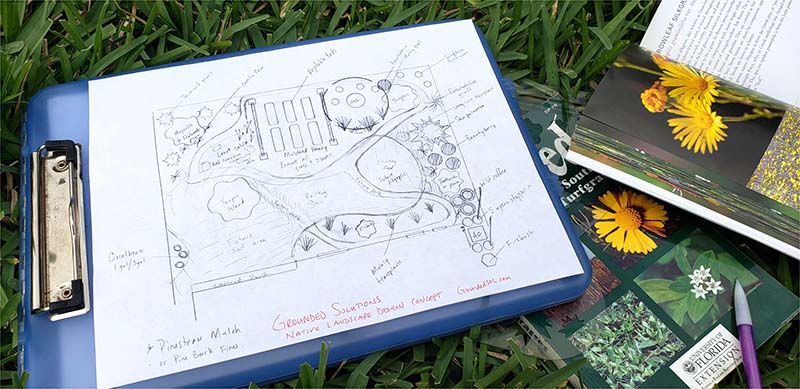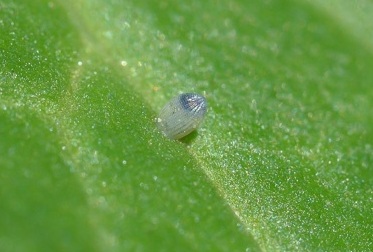During a site analysis consultation we discuss desirable elements of your landscape, problematic areas and where you would like recommendations for change. A full discussion lets you decide what are the most important priorities in the landscape and how a long term native landscape plan can be implemented around your home.
 Looking to add a butterfly garden? Wanting to feed the bees? Desire to plant more privacy with a fence-line screen or buffer the property line with bird attracting shrubs?
Looking to add a butterfly garden? Wanting to feed the bees? Desire to plant more privacy with a fence-line screen or buffer the property line with bird attracting shrubs?
Small area designs start with a well-defined area that is ready to be reimagined with native plants. A site analysis consultation is included in this package. We meet, we review the areas in question and a hand-rendered design is made. Each design provides plant names, sizes, quantities, and spatial details you need for a DIY installation. Plant acquisition and delivery services can be provided.
A digital design starts with producing a flexible concept where the goals of each area is spelled out. Using our consultation discussions and photos of the property, extra time is used to brainstorm, sketch out and identify landscape details, keeping long-term plant development and maintenance in mind. To get us started. I collect a $750 deposit (towards the full cost) at the initial consultation. Please have a property survey available to work from, a digital copy is best.
The second meeting is for our concept review. With a large-format printed design, we review the concept, discuss what works and what doesn't and walk the landscape to envision the changes. Any needed alterations are made after the concept review and a viable planting plan with plant specs and planting details is provided as a high resolution pdf.
With the planting details in place, we are finished with the design process. You can choose to implement the design yourself, request plant installation bids from other companies, or request Grounded Solutions assist you in acquiring the plants and adjusting them in the landscape for planting.
Each design contains different information.
Please Like and Follow as we grow
All landscapes require some maintenance, but there are degrees to which maintenance can be minimized. For example, a sod landscape with viburnum or podocarpus hedge may need to be trimmed weekly during the summer and monthly during the winter. Native shrubs and trees tend to have a slower growth rate which reduces the trimming schedule to once a year. Shrubs and small perennial bushes may need trimming twice a year to keep shape in the summer and the dead wood cut back in the Spring. Annuals can get away with weeding and deadheading four times a year between each season. So a 12 visit cycle, or 18 visit maintenance cycle per year turns into a 4 visit cycle with the summer and spring visit lasting longer than the others. This cuts down on gas emissions and noise pollution from hand held equipment. Reduced water requirements save money and water as we watch our pristine resources grow scarce. And the biological diversity that occurs with native landscapes can eliminate the need to apply pesticides to the landscape.
In Florida you can plant any time of year. In winter, colder temperatures reduce growth rate in most plants, therefore plants require less water to get established than in summer months where the growth rate is high and temperatures can be stressful. When planting in spring and summer, supplemental water will help the new root system stay hydrated in naturally hot, dry soils. If late June, July and August bring our normal rainy seasons, nature will take care of extra watering in non-irrigated sites. Spring and fall have bright, shiny, cool days where working in the garden is a pleasure, so it's easy to be outside tending to new plants. Helping them get established.
Irrigation is not necessarily needed long term, but each plant will need water until it is fully established. Each type of plant will have a different establishment interval. Seasonal annuals offer a quick growing life cycle and a relatively short establishment period. Anywhere from 1 - 2 months of attention is sufficient to give annuals their start. Perennials or shrubs with woody stems will need a little bit longer, in the range of 3 - 6 months. Trees are often planted and left to do their thing, but this can give the tree a rough start and stunt long term growth. Trees enjoy regular watering for approximately a year. Regular watering can be through targeted pooling around the base with a hose, 2 - 3 times a week for the first 3 months, and expanding the intervals (but not quantity) over time. Trees should continue to receive water at least 1 time a week for up to, and beyond a year depending on how the tree acclimates to its new soil and light conditions.
Site prep is the first step of the long term maintenance strategy. When you look at the bed you'd like to re-vamp, or the sodded yard you'd like to reduce, you are looking at your site. Preparation is the process of getting it ready for planting. A short sighted view is to slash down weeds or shrubs, till the ground, then plant. This will disturb the natural seed bank and encourage rapid germination of undesired weeds. Mulch or landscape fabrics won't be able to keep them all down. Good preparation is giving time for that seed bank to become exhausted. Knowing what will grow back after you plant is a big part of the maintenance strategy.
My rate is $150/hr. As I work with various clients it becomes clear that each project has a unique scope of attention. Sometimes the homeowner just needs a site review so they can begin to make informed decisions. Sometimes instructions are needed to show which plants will add to the space, and where they should be added or moved. Sometimes there are deeper problems like tree health, soil fertility or erosion issues and I'm needed to work alongside my clients to find real solutions. Keeping a flat rate allows me to take each problem and give it the attention it needs rather than setting price packages for each set of services.
Yes, small projects are my specialty. For large projects I work with native nurseries skilled in installing full native plant landscapes. I'm happy to work along side you if you like to get your hands dirty, or simply place the plants where they should be planted for those who have a maintenance person they like to work with.
Yes, small or large deliveries can be scheduled.
An annual is a vegetative plant that fulfills it's lifecycle in one season. Which means it germinates from seed, grows into a plant, blooms for several weeks and then sets new seeds to be scattered around for the next time the season is right. Annuals frequently occur once a year (like blanket flower, Gaillardia pulchella). Perennials have a few distinctions. The classic perennial is a plant that lasts 2 years. The first season it grows vegetatively, sets a flower, then sets seed. As the bloom and foliage die, energy is put back into the roots and they don't die. The second year, just when you thought it was gone, it re-grows from the roots, flowers and sets seed, then it dies completely, (like spotted beebalm, Monarda punctata or tropical sage, Salvia coccinea). New seeds pop up and start the cycle all over again. Perennial can also refer to something that doesn't die back completely but can be severely cut back or frozen back between seasons (like firebush, Hamelia patens).
Take a look at my gallery for images and information. I should have a few links to my favorite plant databases. Remember to use the botanical name when looking up the plant for more accurate information.
No, but there are a host of native medicinals out there. Let's keep the research going.
It's a plant that has a specialized relationship with a specific species of butterfly.Florida Museum.ufl.edu.
The butterfly is a beautiful creature who will drink from any cup, but will only lay their eggs on a particular
type of plant. That's because the larvae, when it hatches will be so small it has to start eating right away.
The worst type of raw vegan possible. They will only eat the freshest foliage on a particular genus,
or species of plant. So, this is what we mean by habitat, grouping plants together that exist in concert
with insects to form the base of the food web.
Flowers that produce nectar and have a tubular shape to them can be planted. Larval host plants will bring them around to mate and lay eggs, which provides regular flight patterns to enjoy from a window or from the porch.
Honey bees, wasps or yellow jackets are what we think of when we imagine being stung. Honey bees sting to protect the large quantity of honey they collect. Wasps and yellow jackets are fine until the nest is disturbed, and their stinger are large so they hurt a lot. Native bees tend to be small. Many of them are no larger than a dime. Native bees are also solitary bees, nesting in 3/8 inch diameter holes or buried in the ground. Each hole is home to just a few larval eggs. Each egg is left with enough nectar and pollen to grow into a strong young bee. Since native bees don't make a large quantity of honey, they don't have that much to protect. Often they go about their business right under our noses and we don't even notice. Yes, they can sting, but they are likely to just fly by.
Native plants are the base of the food web for your region. It starts with the smallest insects eating specific plants. Slightly larger insects and animals eat those and so on, until you get to the top predators. Studies show habitat loss as the top reason that the bottom of the food chain is disappearing.
Probably not. Each season brings different temperatures, rainfall, intensity of light and length of evening. Native plants respond to these changes and showcase true seasonality for Florida. Spring and Summer bring a lot of green growth. Fall brings a lot of color through grasses and flowers. Winter brings leaf change and dormancy. Cutting away the brown in the Spring will invigorate new growth as temperatures warm and the sun rises in the sky.
Yes. I have a few contacts that I've been referring to clients to help with tree work, small builds or paver-stone pathways.